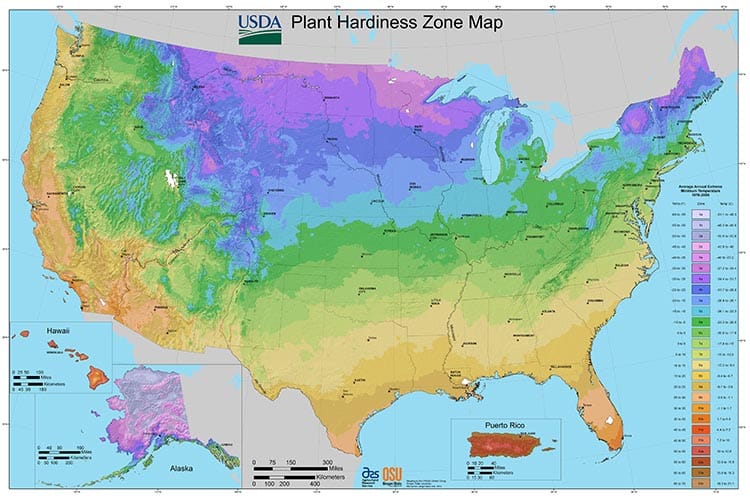Do you get jealous of your neighbor’s green lawn? Maybe you wish that you could walk barefoot through your own soft, green grass. If your yard is overgrown with weeds and bramble, it’s time to get your lawn in shape.
Fixing a messy lawn starts by understanding your unique climate and soil conditions. A green lawn requires amending your soil, fertilizing, and picking the right seed. Frame and edge your lawn with the correct landscaping and hardscaping for a complete look.
With this guide, you’ll understand how to plan your lawn renovation, when to implement your plan, and how to make sure it looks intentional and well maintained.
How to Tackle a Messy Lawn
A lawn worthy of the cover page of the magazine, even if it’s just your homeowner association’s newsletter, requires a lot of time and effort. Picking up a bag of seeds from your local hardware store and scattering them on the ground likely won’t get you the results that you want.
You must understand the climate you live in, the condition of your soil, and how much sun and shade your lawn gets. This information will tell you how to amend your soil, what kind of fertilizer to use, and what type of seed to use. Gather this information months in advance of when you need to seed your lawn.
Understanding Your Climate
The United States Department of Agriculture defines plant hardiness zones as areas with similar weather patterns throughout the year. For example, The West Coast shares similar climate zones due to the consistency of the marine atmosphere despite the changes in latitude. Portions of the Southeast United States around the Gulf of Mexico are also grouped together in a climate zone.
One of the biggest defining factors is the dates in the year that the zones commonly get frost for the first time or the last time. Each climate zone is separated by 10F difference in the coldest winter temperature. You can look up your specific climate zone by ZIP Code on their website.
The type of grass your lawn needs depends on which hardiness zone, or climate, you live in. Different grass types are needed based on these different climate zones. For example, carpetgrass works well in USDA zones 8-9, but not for other zones. Bluegrass works in zones USDA zones 2-6, but not for 1 or 7-13.
Perform a Soil “Jar Test”
A soil test is a very useful way to tell what makes up your soil. No soil is the same. You may have different soil types across your own lawn. If you find that one plant grows well in the front of the lawn but doesn’t in the back of the lawn, soil could be a contributing factor.
Once soil test is called the shake test. You’ll need a mason jar and a handful of soil from your backyard. GardeningKnowHow.com describes the “jar test” as follows:
- Fill the mason jar about half of the way full of your soil, then up to 3/4 with water and a small amount of dish soap. Remove any large plant matter or rocks.
- Shake vigorously.
- Set it on a shelf or counter for a couple of days without moving it for 24-48 hours
- As the soil settles, different particles with different densities will settle on visible layers.
Sand will typically settle quickly on the lowest layer. Silt will fall on top of this. Finally, clay will typically stay in suspension, unless left undisturbed for many days. Oregon State provides a scientific procedure on how to tell what percentage of your soil is what type of material.
After settling for 24 hours, measure the total depth of the sediment. Shake again, then measure after 40 seconds. The depth of the layers after 40 seconds is the sand. After 30 minutes, measure again for the silt later. Subtract out the depth of the sand to get the total depth of the silt. Finally, the remaining amount is the clay portion. Divide each depth by the total depth to determine what percentage each layer is of the total.
Even though soil should be a balance between 40% sand, 40% silt, and 20% clay, you will rarely find a perfect balance. Soils that have a lot of sand will drain quickly and be poor in nutrients. Clay soils do not drain well, leading to poor plant roots.
Analyze Your Soil Acidity and Nutrient Levels
Another soil test that is easy to perform measures different nutrients in the soil. You can pick up a soil test at most local hardware stores. A basic soil test may only include a pH indicator. However, other kits may include tests for nitrogen, phosphorus, and potash.
Conduct the tests as indicated by the manufacturer and record the results for future reference. The soil conditions can change throughout the year depending on your rainfall so you may need to conduct a soil test like this several times.
A quick soil test, such as Rapitest, may include mixing some of your soil with water, then filling the test chambers with the solution. The powder for each test is then mixed with the water and compared to a color scale. The intensity of the color indicates how much of each nutrient is in the soil. Pale colors indicate the nutrient is depleted or lacking.
Home Depot also has a video on how to perfom such tests, you can check it out here:
Planning Your Lawn Renovation
Once you understand your climate, soil quality, and nutrient levels, you can start to improve your lawn. A good lawn starts with a good base, including good soil and the right nutrients. Luckily, it’s easy to amend your soil.
Amend Your Soil for a Lush lawn
If you find a chair soil has a lot of clay or sand you can amend your soil, which includes adding another type of soil on top of your existing soil. These amendments are meant to get down into the soil where the roots of your grass grow.
Soil amendments can include:
- Organic matter, like compost or other previous living plant material, which helps the soil hold water.
- Lime, Sulfur, or Sulfates can alter your soil pH. If your soil is too acidic, add lime. Too basic, add sulfur or sulfate. Sulfate also helps fertilize your lawn too.
- Gypsum can help improve clay soils to increase drainage and help the roots grow through the dense soil.
If you’re amending your existing lawn, make sure you get a good even coverage. Use a shovel full of the material and flick the amendment across your lawn with your hand. You may even use a rake after to help force the material down into the ground.
Use Fertilizers to Promote Growth
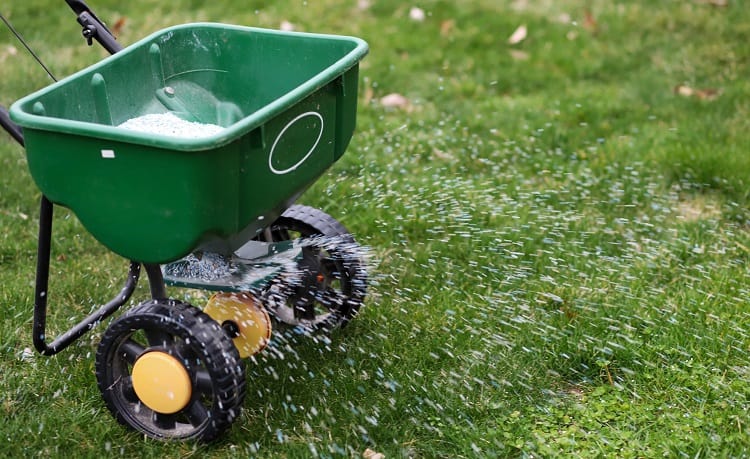
Fertilizers sold at your local hardware store nursery will have different blends depending on what your soil lacks. Once you have your soil test completed, you can identify which type of fertilizer to buy.
Fertilizers should be rated with the three main nutrients. For example, fertilizers that are high in nitrogen are good for growing lush in long leaves. Fertilizers that are high in phosphorus are good for growing roots before the winter. Potassium helps with overall health. These nutrients correspond to the first, second, and third number.
There are many different types of fertilizers, such as granular, liquid, organic, and synthetic. Granular is easy to spread and control, while liquid works faster. Organic fertilizers can be made at home but may be less reliable. Synthetic is cheaper and fast acting.
Make sure to apply your fertilizer with a spreader to get an even distribution. Too high concentrations of fertilizer can burn your lawn causing bald spots. Some fertilizers may also have other lawn control elements mixed in, such as weed, bug, or disease control.
However, the type of fertilizer you use may depend on the season. Fertilize in the fall with phosphorus to make sure the lawn has strong roots before winter, but use nitrogen in the spring for a lush lawn for summer.
Dethatching to Improve Grass Quality

Before seeding your lawn, you’ll actually want to detach your lawn.
Underneath any green grass that you have growing currently will be a layer of dead leaves and roots that may prevent your new seeds from forming new roots. A small layer of this thatch helps prevent soil erosion, but a thick layer can prevent water, nutrients, and air from reaching the roots of your grass.
You can use a sharp tined rake to help pull up this dead layer. You may be surprised how bare your lawn actually is once you get rid of this thick thatch layer. If your thatch layer is very thick and covers your entire lawn, you might need to rent a powered dethatcher.
Make sure that you thoroughly weed your lawn. You don’t want your new seedlings competing with hardy weeds for water and nutrients. If you think your lawn is mostly weeds, you may consider completely taking up the top layer of grass and weeds before amending, fertilizing and seeding your lawn.
Choosing the Right Seed Blends
Most lawn seeds are a blend of different types of grasses to help keep your lawn green throughout different seasons. They can also help your lawn stay and even consistent color even if you have shade and sun in the same lawn
Make sure you pick a blend of seeds that is right for your lawn. If you live in an area with a lot of rain you don’t need a seed that is drought tolerant. If you have periods of dry weather and periods of wet weather, you need a blend of seeds that are adaptable for both. If you live in an especially drought prone area, perhaps you should consider grass alternatives, such as clover or fake grass.
Your local garden center or hardware store may even carry seeds blends specially formulated for your location. These blends will help offset the weaknesses of the different grass types.
Similar to the fertilizer, use a spreader to see if your lawn. Try not to seed lawns during a period of hot, dry weather or weather that will be especially rainy either. In dry weather, the seeds may sprout up and quickly be burned by the sun or heat. In very rainy weather, the seeds will just be washed away with the rain.
Seeding Versus Sodding
Starting a new lawn from seed can take many months before you see satisfactory results. When seeding your lawn from a barren, dirt lot, you may not have a strong, established lawn for several years. If you don’t have the time or the patience to wait then you can consider using sod to replace your lawn.
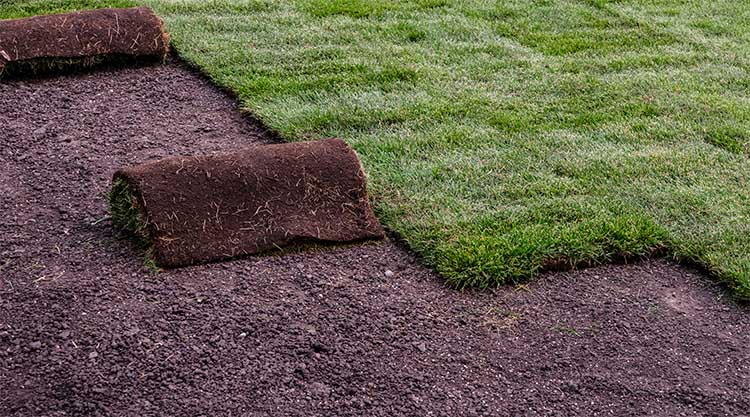
When using side you have to start from a blank slate. That means removing all of your existing lawn and leveling out the dirt below. The dirt the sod is laid on needs to be prepared with soil amendments and fertilizers, similar to seeding your lawn. This will help the new sod form strong roots into the existing dirt.
Sod will be delivered to your home in pallets of short rolls of sod. The rolls are then laid out on your new grass similar to tiles. Make sure to stagger the rolls so that you don’t get it four corners of sod in a single location.
After the sod is installed, make sure to water and fertilize your new lawn to keep it looking pristine. Over time, the seams will gradually disappear.
Maintaining Your lawn
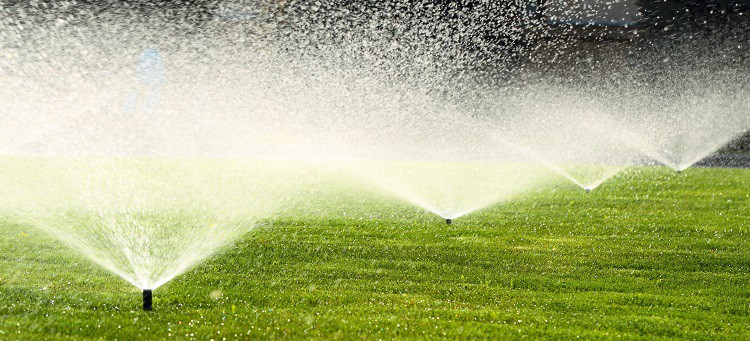
Once your sod or seedlings are growing, you’ll need to maintain your lawn carefully to see consistent results. Maintaining your lawn includes watering, fertilizing, weeding, dethatching, and mowing.
Water your lawn consistently during periods of dryness. The most optimal time is to water your lawn between 4 and 6 AM. However, most people are asleep at that time, so automatic controllers can turn sprinklers on and off in these early morning hours.
Periodically fertilize your lawn as well. The best time to fertilize is in the fall and in the spring. Once your lawn is growing strong, you won’t need as much fertilizer as when you first start out.
Stay on top of the weeds. Weeds will choke out your new lawn. It’s easier to pick a dandelion before it goes to seed than having to pull hundreds of dandelions.
When mowing, make sure that your lawnmower has a sharp blade and a bagging option. Grass clippings can smother the lawn, but bagging helps eliminate that. Cut the blades less than 1/3 of the total length of your grass at a single time. That means not waiting too long in between trimmings. Cutting more than ⅓ of the length can kill the grass.
Occasionally, you may need to reseed bare spots in your lawn. If you need to reseed, make sure you buy the same seed blend that you previously used, else you could end up with different colored spots in your lawn.
Framing Your Lawn with Landscaping
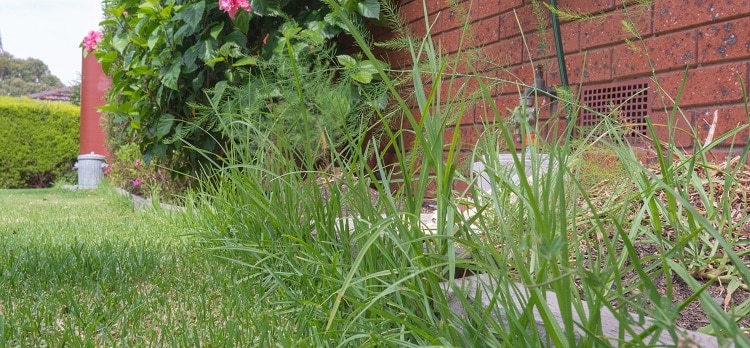
No matter how lush and green your lawn is, the edges of your lawn can make it seem unkept. Consider landscaping around your home to soften the edges of your house and yard and adding visual appeal.
Flower bed edges also help make it easier to mow your lawn neatly. Use a string trimmer around these edges to keep the lawn neat and tidy.
If you have trees or shrubs in your backyard, remove the lawn in a small circle around the plant and cover with mulch. It’s much easier to trim the grass with a string trimmer at the edge of the mulch. Additionally, the lines of a string trimmer can damage the bark of your plant over time, which could cause it to die. The mulch will also keep weeds down, making it easier to keep the beds looking neat.
When selecting your landscape, make sure that the plants that you choose have a consistent theme. They don’t all have to be the same type of plant, or even have the same color. However, strategically choosing contrasting plants can make them seem unified and intentional. Your local garden center will typically have recommendations for what plants are good for your climate.
Try not to plant trees or shrubs by themselves. Create levels of interest by planting them in pairs or trios, or with plants of varying heights. Avoid sharp edges in your flowerbeds, preferring curves and soft lines. Organic and natural shapes will help the appearance from feeling too manufactured.
Your Messy Lawn Renovation is Just a Plan Away
Overhauling your messy lawn takes a little planning and foresight. However, once you renovate your lawn, the easy maintenance will help you keep a lush, green lawn for years to come. Even a good mow, cleaning up the edges with a string trimmer, and pulling weeds can make your lawn look and feel like new. Adding fertilizer, amending the soil, and reseeding barren patches will only take a little additional effort. You’ll find the results rewarding in how it looks and feels.


